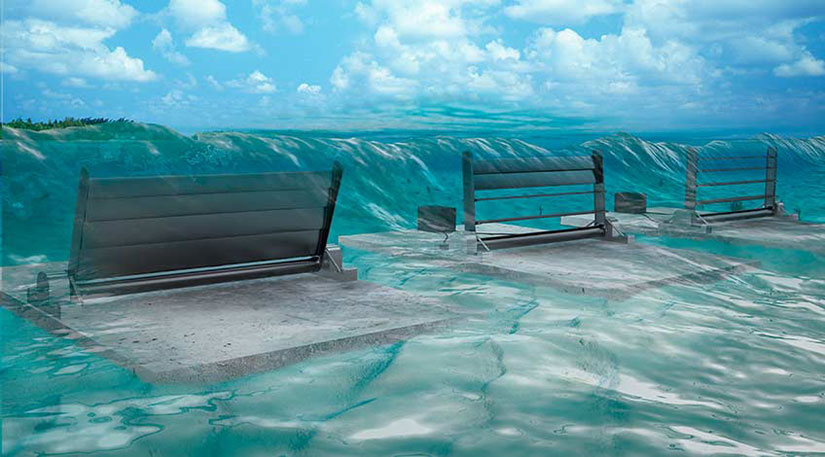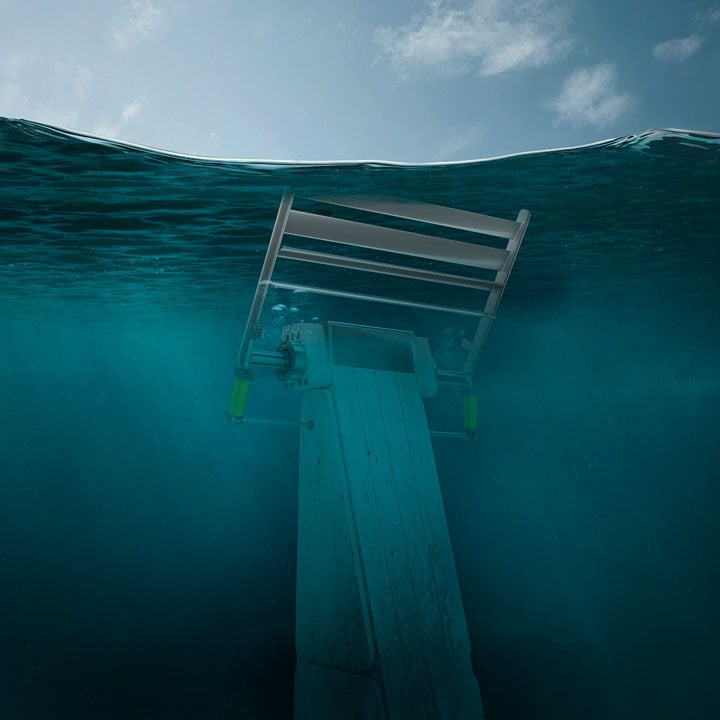Variable-Geometry Wave Energy Converter Design
NLR is exploring next-generation control strategies so wave energy converters can produce more power, handle extreme loads, and cost less.
Wave energy is not yet cost-competitive, in large part because of the high costs associated with building wave energy converters (WECs) robust enough to withstand large waves. NLR researchers are studying ways to reduce these structural costs and increase energy production to help wave energy achieve commercial success.
Benefits of Variable-Geometry
WECs traditionally have fixed-geometry hulls (that cannot change shape) and only one method to control their energy production: the generator, or power take-off (PTO). When a fixed-geometry WEC cannot avoid the full impact from extreme waves (a process known as load shedding), operators must place the device in survival mode, which halts power production in the moment and also limits production to specific wave conditions. Such limitations prevent the WEC from generating power over a wider range of sea states, leading to increased downtime, which could in turn dissuade developers, investors, and policymakers from accepting wave energy as renewable technology capable of providing consistent power.
NLR researchers are exploring new WEC designs to learn whether they could help optimize power production and costs. One such design is called variable geometry. Variable-geometry WECs can change shape in more energetic sea states to allow potentially destructive waves to pass by. A design using variable geometry could have several benefits, such as:
- Adding a second way to control a WEC, similar to blade pitch control in a wind turbine
- Allowing WEC operators to adjust a device’s geometry to shed potentially destructive loads in large-to-extreme sea states or increase power absorption in low-to-moderate sea states
- Enabling WECs to capture more energy, operate more efficiently, and generate more cost-competitive wave energy.

Controlling Peak Power and Fatigue Damage Accumulation

Because waves fluctuate, WEC developers must design components to handle loads many times greater than the average. That means devices need a PTO capacity that far exceeds its average power output, a need that can significantly increase the PTO cost. Operators can potentially reduce their peak-to-average power ratio and maximize or maintain their WEC’s power output through variable-geometry designs or energy storage. These design upgrades could help developers:
- Deliver more stable voltage and frequency to the grid
- Reduce the size, weight, and peak power of the PTO
- Balance energy production against structural costs as well as generator size and cost (variable-geometry control parameters can be designed for a specific site’s wave conditions)
- Greatly reduce the cyclic fatigue loads on all system components.
A utility-scale wave energy converter will likely be designed to last for 25 years. Lowering peak loads could help reduce fatigue damage, which could extend a device’s life span and reduce its levelized cost of energy by reducing operational and maintenance costs.
News Articles
New Wave Energy Testing Platform Could Save Developers Time and Money, NLR (2023)
A Window Into the Future of Wave Energy, NLR (2022)
Shoring Up Wave Energy’s Bottom Line Through Variable-Geometry WEC Designs, NLR (2021)
Harnessing the Waves, The American Society of Mechanical Engineers (2022)
Publications
Design of a Two-Body Wave Energy Converter Featuring Controllable Geometry, 42nd International Conference on Ocean, Offshore, and Arctic Engineering (2023)
Fatigue and Structural Load Analysis and Control for Variable-Geometry Wave Energy Converters, U.S Department of Energy Water Power Technologies Office Peer Review (2022)
Significant Cost Reduction Potential for Wave Energy Conversion Devices With Variable-Geometry Modules, U.S. Department of Energy Water Power Technologies Office Peer Review (2022)
Influence on Structural Loading of a Wave Energy Converter by Controlling Variable-Geometry Components and the Power Take-Off, 41st International Conference on Ocean, Offshore, and Arctic Engineering (2022)
Numerical Model Development of a Variable-Geometry Attenuator Wave Energy Converter, 39th International Conference on Ocean, Offshore, and Arctic Engineering (2020)
Submerged Pressure Differential Plate Wave Energy Converter With Variable Geometry, European Wave and Tidal Energy Conference (2019)
Contact
Share
Last Updated Dec. 6, 2025
